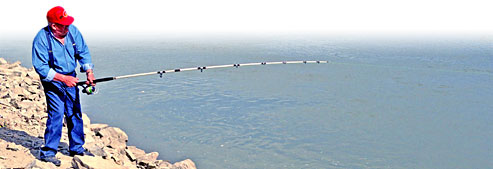
In the far reaches of the northwest corner of North Dakota lies the Confluence of the Yellowstone and Missouri Rivers. Each spring, swollen with mountain runoff, the wild and murky Yellowstone swells and rushes headlong to spill its waters into the wide Missouri, unchanged from its discovery by Lewis and Clark.
It is here where the ancient paddlefish comes to spawn each year, swimming against the mighty current to deposit their eggs on the flooded gravel bars in the Yellowstone. Enthusiasts also come from all 50 states and across the continents to experience this unusually large freshwater fish in its rugged and original habitat.
The paddlefish, polyodon spathula, is certainly one of the most peculiar of the North American fishes. It has no teeth and except the jaw, the entire skeleton is made of cartilage. But for a few scales on the tail, the skin is smooth.
The largest females snagged each year are between 15 and 30 years old and weigh over 70#. Plankton feeders, paddlefish are thought to use their "paddle" (rostrum) to help keep them level as they move through the water with their mouths open, filtering food through their filament-like gill rakers. The rostrum also helps detect food organisms through tiny sensory pores.
Current paddlefish populations are challenged by changing spawning grounds, blockage of migratory movements by dams, pollution, and commercial overharvest. The research conducted as a result of North Star Caviar funding is providing valuable insight into the life cycle, behavior and habitat of the paddlefish, providing fisheries management the tools to assure a sustainable population.
